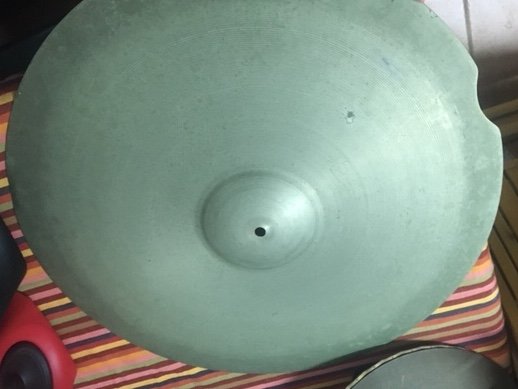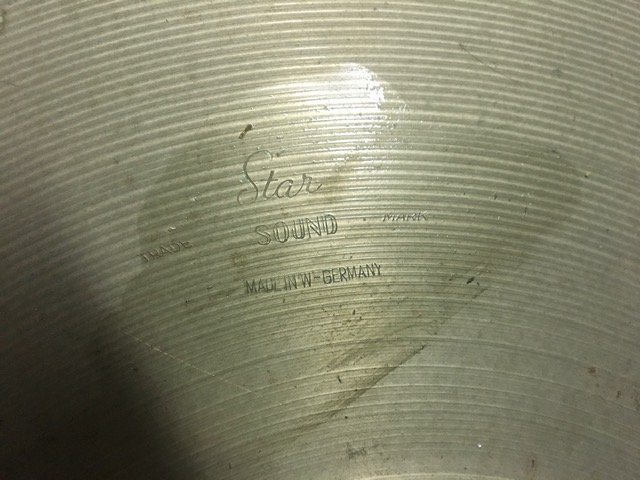Puede tener algo que ver lo esto?
Zyn, Super Zyn & 5 Star Super Zyn[edit]
Zyn cymbals were introduced by
Premier Percussion in 1950. They were marketed as an affordable instrument, with a priority of functionality over musical quality. They were made of
nickel-silver alloy and could be purchased with Premier's Olympic-series drum kits. Pairs of
concert cymbals were available for marching bands and orchestra.
The professional-grade
Super Zyn range followed in 1951, realised in
B20 alloy. According to
Cymbals Today (a contemporary promotional material published by Premier), these instruments were endorsed by a number of professional jazz drummers, such as
Ray Ellington and
Eric Delaney.
[5] Sizes were 12 inches through 24 inches, in
thin,
medium-thin,
medium or
heavy weights.
[6] Concert cymbals were available in 14, 15 and 16 inch pairs.
The
5 Star Super Zyn range was announced in 1968, replacing the Super Zyn as Premier's professional-grade cymbal. Like their predecessors, these cymbals were also made of B20 alloy. However, their build was thicker and heavier - similar to the heavy-weight Super Zyns - reflecting contemporary trends in popular music, where denser cymbals were required to meet the
increasing volume of amplified instruments in popular music. The range began with a 12-inch cymbal, while hi-hats could be specified in 13, 14 or 15 inch pairs. 16, 18, 20 and 22 inch cymbals were all available as a ride, crash, or crash-ride.
Sizzle cymbals (factory-fitted with rivets), could be ordered in 18 and 20 inch sizes. Concert cymbals were available in 14, 15 and 16 inch pairs.
There was also a budget alternative to the 5 Star Super Zyn, called the
2 Star Super Zyn. The naming system was a reference to the contemporary
octane rating system for leaded petrol in the
UK.
Premier also marketed a
Zyn 70.
Production of all Zyn types concluded in 1984, replaced by Premier's then-expanding distribution and promotion of
Zildjian cymbals. However, the name has since been revived on two occasions, first in the late 1990s with a German-made Zyn. All previous Zyn cymbals featured stamped logos but the
Made in Germany Zyn title was
stencilled in capital letters. The range consisted of just four cymbal types: pairs of 14 inch hi-hats, 20 inch
Medium Ride, plus 16 and 18 inch
Crash cymbals. Unlike previous Zyns, there were no concert cymbals or
Super Zyn variants marketed on this occasion.
The second and final reintroduction was announced by Premier in 2006: the new
Zyn was machine-hammered B20 alloy, while the new
Super Zyn was combination hand- and machine-hammered B20 alloy. Both types were made in China and can be identified by their stencilled nametag (distinct from the stencilling of the German-made Zyn range).
[7] As with past Zyns, pairs of concert cymbals were also available. Unfortunately, the revival was commercially unsuccessful and the cymbals were only produced for a short period of time.

